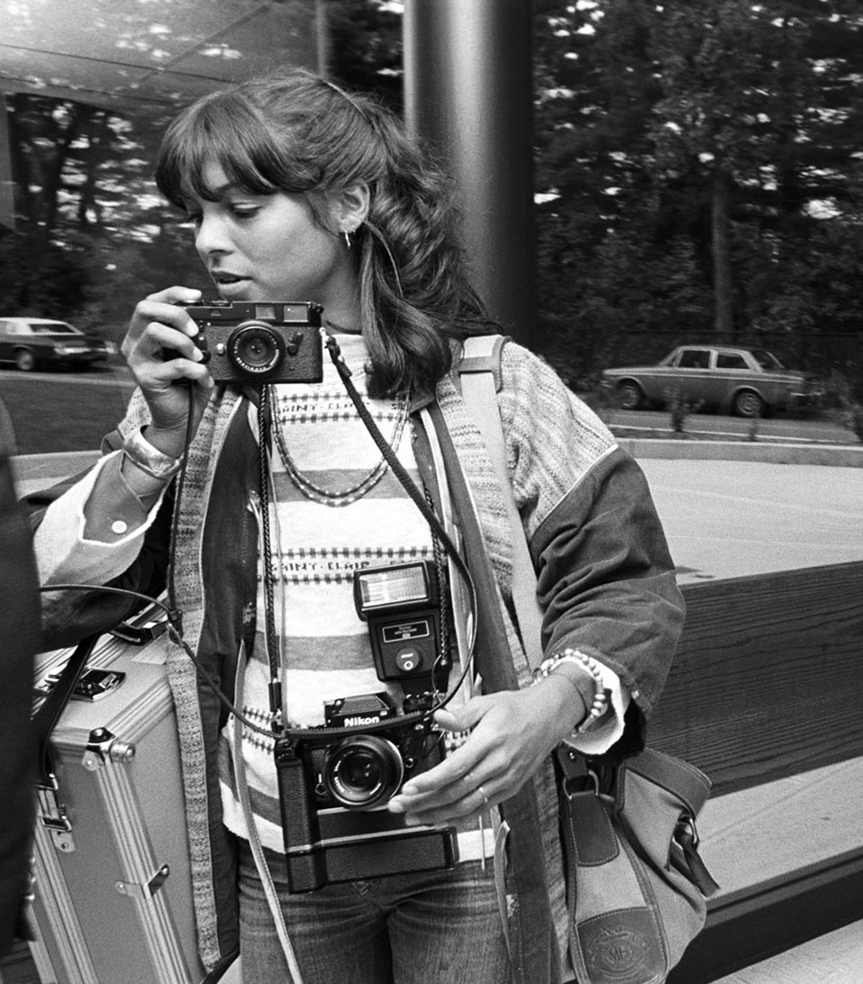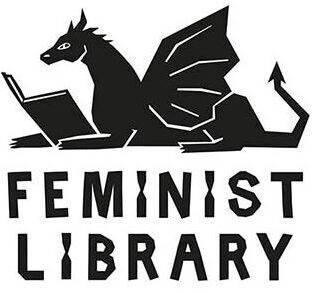Exploring the Collection – Viewfinders: Black Women Photographers.
‘Exploring the Collection’ is a new column that explores the Feminist Library’s rich repository of literature, giving a deeper look at key pieces of herstory. This month, Frankie Moutafis shares with us their discovery of Viewfinders: Black Women Photographers by Jeanne Moutoussamy-Ashe (1986).
Revisiting the first compendium dedicated to Black female image-makers throughout history
“This book only scratches the surface of the contributions Black women have made to Black history, American history, and photographic history” begins Jeanne Moutoussamy-Ashe as she introduces her 1986 book, Viewfinders: Black Women Photographers. A historical survey dating back to the medium’s advent in the mid-19th century, and concluding in what was then the modern-day, the publication was the first dedicated to revealing the Black female pioneers neglected from pictorial histories and has since stimulated many to pick up where this inceptive survey left off, some 35 years ago.
In the early 1980s, when Jeanne Moutoussamy-Ashe – a photographer, activist and author – first began unearthing the 33 women enriching the pages of Viewfinders, the archival representation of Black women photographers was scant. A much-needed 1983 exhibition titled A Century of Black Photographers, 1840-1960 was shown at the Museum of Art, Rhode Island School of Design with almost no mention of women working in the field, meanwhile, the renowned photography scholar Deborah Willis-Ryan was only just beginning her research into Black women’s contributions. Willis-Ryan’s indispensable work at the Schomburg Center for Research in Black Culture was demanding much of her time, so compelled to fill these glaring historical gaps before more women were ‘lost’ to history, Moutoussamy-Ashe began a 4-year research project which recounted these photographers from as far back as 1866.

Presented chronologically, the book begins post-Civil War where traces of Black women photographers have been meticulously uncovered through city directories, newspaper articles and censuses, although their names remain, their photographs have been lost and it isn’t until the 1920’s that images are unearthed. We are introduced to studio owner and skilled portraitist, Elise Forrest Harleston who documented her fellow Black community in her home town of South Carolina through the 20s and 30s, breaking through an almost impenetrable glass ceiling to become the first women to attend the Tuskegee Institute of Alabama to study the medium.
By 1950 there were 240 Black female photographers registered as working in America, amongst them were women such as Billie Louise Barbour Davis who had reimagined her laundry room into a dark room, experimenting with Photograms, chemistry and image manipulation to produce curiously postmodern studies alongside portraits of her community that demonstrated superior technical finesse. Meanwhile, California-based Vera Jackson was working as a press photographer for The California Eagle, capturing African-American society and celebrity life; her photos have become salient documents of Black culture at the time.
As photography equipment became less cumbersome, the ability to take to the streets and efficiently document the world around oneself came with greater ease. By the early 1970s photographers such as photojournalist Mikki Ferrill were capturing the vibrancy of Chicago’s South Side streets by day and the electricity of its club scene by night. Her photographs of the improvised Garage nightclub captured a tight-knit Black community, uninhibited and ablaze.


These practitioners were also using the camera to reveal more intimate sides of both Black and female identity. In 1979 film-editor, photographer and lecturer Cary Beth Cryor showed herself in the throes of childbirth, documenting this transformative experience, one which is so infrequently visually represented. Titled Rites of Passage, images were shot between contractions, her camera angled at an overhead mirror, “it is my hope” she says “that this will serve as inspiration to other women who may want to do the unthinkable, the unfathomable, the utterly ridiculous.”

A few extraordinary women later and the book concludes in the early 1980s, with Cary Beth Cryor’s words still lingering you are met with the strong compulsion to search, read and discover – the urge I’m sure Jeanne Moutoussamy-Ashe was hoping to elicit. While respite can be found in the texts that followed – Reflections in Black by Deborah Willis (2000) and MFON: Women Photographers of the African Diaspora by Laylah Amatullah Barrayn and Adama Delphine Fawundu to name a few – we are reminded of the continued importance of archiving histories through Moutoussamy-Ashe’s opening words: “Unfortunately, the significant contribution of hundreds of Black women have been lost to history – their works, papers, photographs – as the eleventh-hour attempt to fill in the gaps and document their roles begins.”
Based in London, Frankie contributes writing, editing, and research to projects across photography, design, and fine art. Most recently she was a researcher and writer for the anthology, What They Saw: Historical Photobooks by Women, 1843-1999, and provided editorial research for the 2021 Phaidon title, African Artists: From 1882 to Now. Her work is regularly concerned with amplifying women’s overlooked contributions to the arts something which she hopes to further through her work with the Feminist Library.

